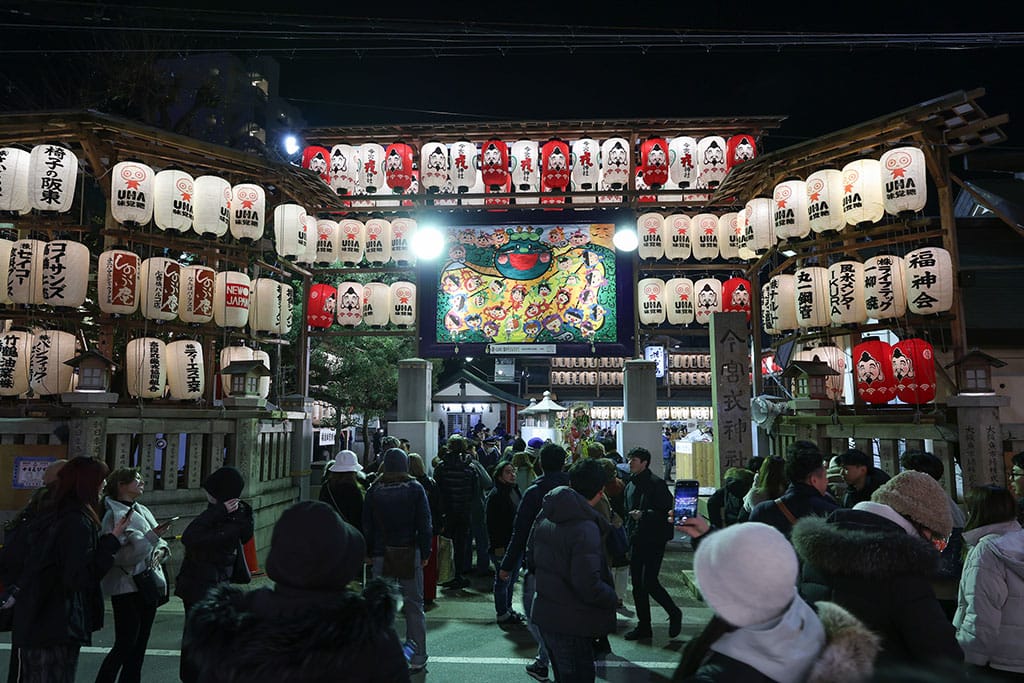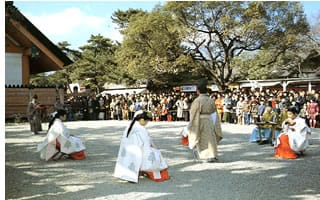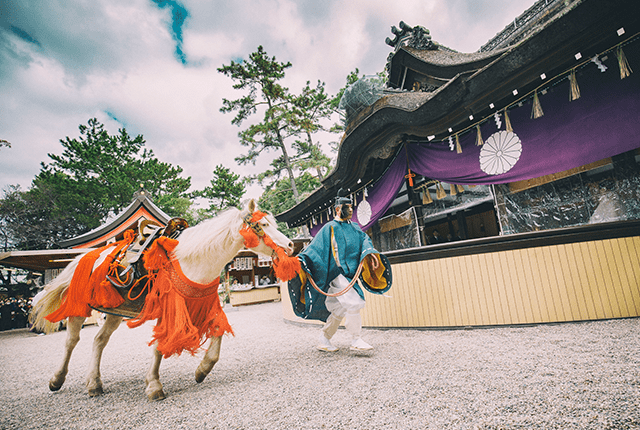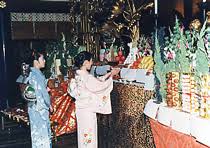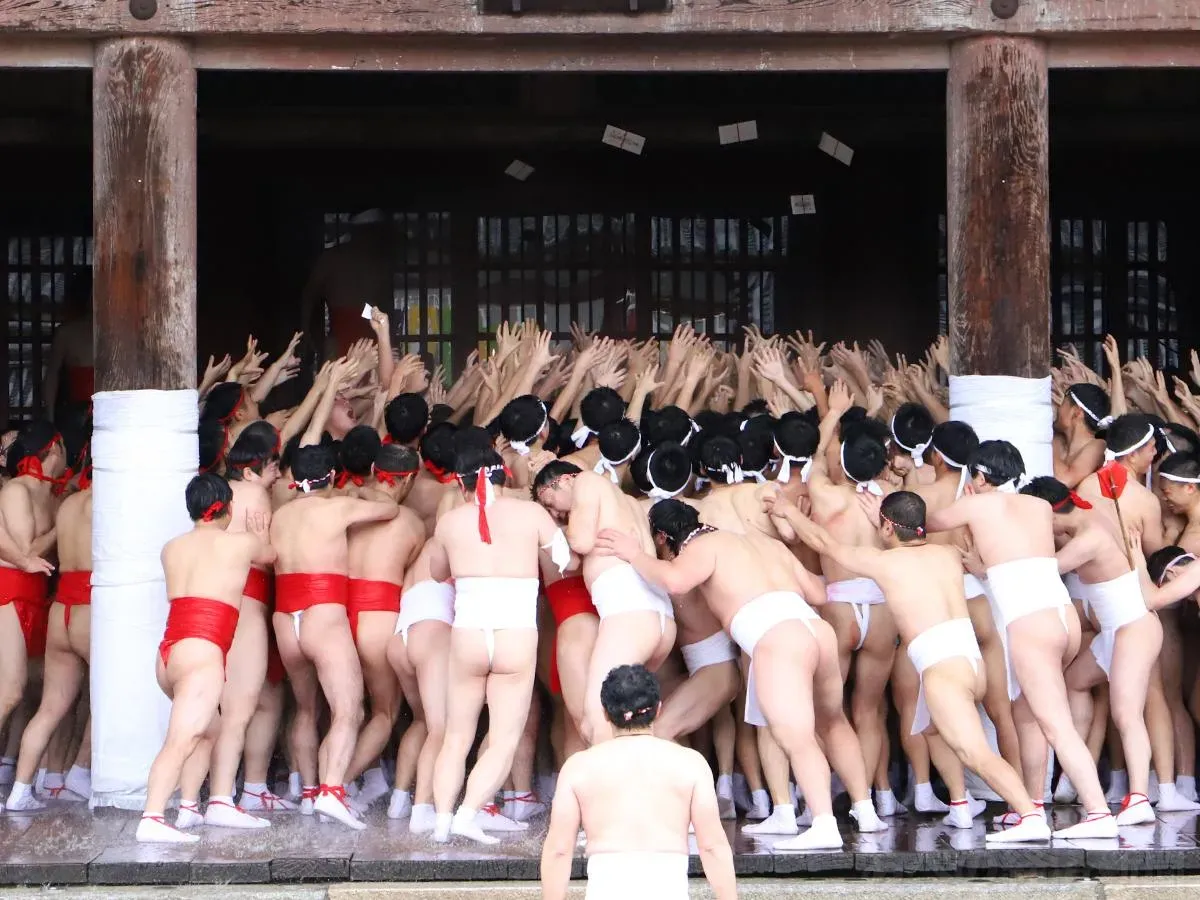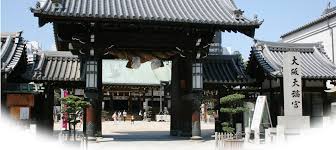Osaka, Japan's second-largest metropolitan area after Tokyo, is a popular tourist destination known for its unique culture, including its cuisine and entertainment. While Osaka is generally known for its relatively mild climate and low rainfall throughout the year, January marks the peak of winter with colder temperatures. Snowfall is possible, so tourists should be prepared with warm clothing such as coats, scarves, and boots.
January, the beginning of the year, is filled with various events celebrating the New Year and aiming to make the coming year a better one. There are many events that can only be experienced during this time, including traditional Japanese celebrations and unique Osaka festivals.
In this article, we'll introduce you to the highlights, schedules, and access information for these events to help you plan your trip to Osaka in January 2025!
Table of Contents
1. Traditional Events in Osaka in January 2025
2. Special January-only Experiences in Osaka
Traditional Events in Osaka in January 2025
Hatsumode (First Shrine Visit of the Year)
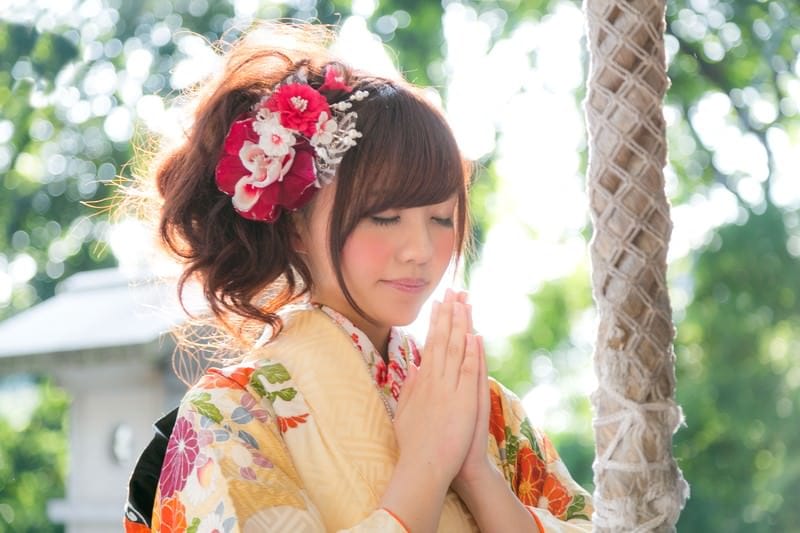
Hatsumode is a traditional Japanese custom of visiting a shrine or temple for the first time in the New Year to express gratitude and pray for peace in the coming year. It's also sometimes called "Hatsu mairi." While you can visit any shrine or temple, many people choose to visit the one closest to their home, praying for good health throughout the year.
Visiting shrines with family and friends, receiving amulets, and drawing "omikuji" (fortune slips) to predict one's luck for the year are typical scenes during the Japanese New Year. It's a good idea to set your New Year's resolutions during your visit to start the year with a focused mindset.
Most people visit during the first three days of January, known as "sanganichi," but it's common to go sometime within January. People may want to greet the gods as early as possible in the new year.
Popular Hatsumode spots in Osaka:
- Sumiyoshi Taisha
Access: 3-minute walk east from Sumiyoshi-taisha Station on the Nankai Main Line / 5-minute walk west from Sumiyoshi-higashi Station on the Nankai Koya Line
Official website: https://www.sumiyoshitaisha.net/en/
- Osaka Tenmangu
Access: 5-minute walk from Exit 4 of Minami-mori-machi Station on the Osaka Metro Tanimachi Line or Sakaisuji Line / 5-minute walk from Exit 7 of Osaka-tenmangu Station on the JR Tozai Line
Official website: https://osakatemmangu.or.jp
- Shitennoji
Access: 5-minute walk south from Shitennojimae-yuhigaoka Station on the Osaka Metro Tanimachi Line
Official website: https://www.shitennoji.or.jp
Toka Ebisu Festival
Source: Official website
The "Toka Ebisu" festival is held to worship Ebisu, the god of commerce and fishing, and to pray for prosperity in business, good catches, and bountiful harvests. The main day of the festival, known as "Hon Ebisu," is on January 10th, which is believed to be the day Ebisu goes out to work. The day before, January 9th, is called "Yoi Ebisu," and January 11th is "Nokori Ebisu."
During the festival, "Fukusasa" (lucky bamboo branches) and other lucky charms like rake-shaped ornaments are distributed. People take these home and display them as good luck charms for business prosperity. Bamboo is considered auspicious due to its resilience to cold and strong vitality.
The "Toka Ebisu" festival is held at various shrines throughout the Kansai region, but the Imamiya Ebisu Shrine in Osaka is one of the "Three Great Toka Ebisu Shrines" along with Nishinomiya Shrine in Hyogo and Kyoto Ebisu Shrine in Kyoto.
Other famous venues include Sumiyoshi Taisha, which has the longest history of "Toka Ebisu" in Osaka, and Sakai Ebisu Shrine, known for its large scale and many visitors.
<Information>
- Imamiya Ebisu Shrine
Dates: January 8-12, 2025
Access: Directly accessible from Imamiya Ebisu Station on the Nankai Koya Line / 5-minute walk from Exit 3 of Daikokucho Station on the Osaka Metro Midosuji Line
Admission: Free
Website: https://www.imamiya-ebisu.jp/english
- Sumiyoshi Taisha
Dates: January 9-10, 2025
Access: 3-minute walk east from Sumiyoshi-taisha Station on the Nankai Main Line / 5-minute walk west from Sumiyoshi-higashi Station on the Nankai Koya Line
Admission: Free
Official website: https://www.sumiyoshitaisha.net/en/
- Sakai Ebisu Shrine (within Sugawara Shrine grounds)
Dates: January 9-11, 2025
Access: About 3-minute walk from Ohsho-ji Station on the Hankai Tramway Hankai Line
Admission: Free
Official website: https://www.sakaitenjin.or.jp/ebisu
Toka Shinji at Sumiyoshi Taisha
Source: Osaka Jinjacho Official website
Toka Shinji is a traditional Japanese event held to celebrate the New Year and pray for a good harvest. The purpose of this event, held at the beginning of spring, is to stamp on the ground to calm the spirits believed to dwell in the land and nature.
Toka Shinji has been performed since the imperial court era when emperors and nobles were at the center of society. Currently, this precious festival is only preserved at Sumiyoshi Taisha in Osaka and Atsuta Jingu in Aichi Prefecture.
During the event, two staff members dressed in imperial court-era costumes offer bags of mochi (rice cakes) to the gods with a ceremonial call. Afterwards, traditional dances called "Shirabyoshi mai" and "Kumano mai" are performed.
The main event is the "mochi-maki" (rice cake throwing) held at the end. Small bags of "fuku no mochi" (lucky rice cakes), believed to bring happiness, are thrown to the visitors. Try to catch one and grab happiness in your hands!
<Information>
Location: Sumiyoshi Taisha
Date: January 4, 2025
Access: 3-minute walk from Sumiyoshi-taisha Station on the Nankai Main Line / 5-minute walk from Sumiyoshi-higashi Station on the Nankai Koya Line
Admission: Free
Website: https://www.sumiyoshitaisha.net/en/
Aouma Shinji at Sumiyoshi Taisha
Source: Official website
The "Aouma Shinji" held at Sumiyoshi Taisha is a festival conducted with the wish "to stay healthy and not fall ill." It is said that seeing a white horse at the beginning of the year wards off bad luck. Every year, many people visit to participate in this event.
The horse ridden by the gods is called "shinme," and Sumiyoshi Taisha has a divine horse named "Shirayuki." Shirayuki is characterized by its beautiful pure white coat and clear blue eyes. It is said that your wishes will come true if you pray while looking into the blue eyes of the divine horse.
During the event, you can see the divine horse slowly paying homage to the four main shrines and then galloping through the same route at high speed. The sight of a white horse galloping through the atmospheric shrine is majestic and one of the highlights of this event.
You can also receive special amulets only available on this day, so don't miss this opportunity to participate!
<Information>
Location: Sumiyoshi Taisha
Date: January 7, 2025
Access: 3-minute walk from Sumiyoshi-taisha Station on the Nankai Main Line / 5-minute walk from Sumiyoshi-higashi Station on the Nankai Koya Line
Admission: Free
Website: https://www.sumiyoshitaisha.net/en/
Shojingu
Source: Official website
"Shojingu" is an event held at Shitennoji to celebrate the birth of Prince Shotoku, the temple's founder. Prince Shotoku was a member of the imperial family and a politician who is considered one of Japan's most prominent historical figures, known for spreading peace, etiquette, and Buddhist teachings.
During the "Shojingu," a variety of foods from the sea and mountains are offered in front of the prince's statue. In 2024, which marked the 1450th anniversary of his birth, a three-day Buddhist service was held, limited to 300 participants on a first-come, first-served basis.
While it may not be a flashy festival, it offers a chance to experience Japanese tradition in a serene atmosphere. It might be a good opportunity to quietly reflect on Prince Shotoku, who was known for his gentle and intelligent nature.
<Information>
Location: Shitennoji
Date: January 12, 2025
Access: 5-minute walk from Shitennojimae-yuhigaoka Station on the Osaka Metro Tanimachi Line
Admission: Free
Website: https://www.shitennoji.or.jp/%E7%94%9F%E8%BA%AB%E4%BE%9B/
Doya Doya: One of Japan's Three Strangest Festivals
Source: Abeno Keizai
"Doya Doya," one of Japan's three strangest festivals, is a unique event where people wearing red and white loincloths fight over talismans that are believed to ward off evil. In the past, it was said that if these talismans were placed in rice fields and farms, they would keep pests away. The festival originated from farmers competing for these talismans.
The name "Doya Doya" is said to come from the Kansai dialect phrase "Douya, Douya," which means "How are you doing?"
In the past, the competition for talismans sometimes led to real fights, but nowadays, it's safely conducted as a traditional event where hundreds of local junior high and high school students participate to pray for a good harvest.
The sight of people in loincloths fighting for talismans under the cold winter sky is a unique spectacle that can only be seen at this festival. It's one of my favorite festivals, so I highly recommend experiencing it at least once!
<Imfomation>
Location: Shitennoji Temple
Date: January 14, 2025
Access: 5 minutes on foot from Shitennoji-mae Yuhigaoka Station, Osaka Metro Tanimachi Line
Admission: Free
Website:https://www.shitennoji.or.jp/event/1/#event971
Tsunahiki Shinji: A Unique Osaka Tradition
Source: Official website
Every year, on the third Sunday of January, Nanba Yasaka Shrine in Osaka hosts the traditional Tsunahiki Shinji festival. This historical event, recognized as an intangible cultural asset of Osaka City, commemorates the victory of the gods over the mythical eight-headed serpent, Yamata no Orochi, believed to protect people from evil spirits.
The festival, which has its roots in the Edo period (1600-1868), used to involve tugging a rope from side to side, with the winning side expected to bring good fortune for the year. Today, the festival features a rope weighing about 300 kilograms, shaped to represent the eight-headed serpent, which is then pulled in the auspicious direction known as "Eho" for that year. A highlight of the festival is the procession around the shrine while chanting "Namba no Tsunahiki Yoiyoi," as participants carry the rope.
<Information>
Location: Namba Yasaka Shrine
Date: January 19, 2025 (Third Sunday of January)
Access: Approximately 6 minutes on foot from Namba Station, Osaka Metro Midosuji Line and Yotsubashi Line
Admission: Free
Website:https://nambayasaka.jp/?page_id=145
Uso Kae Shinji: Turning Lies into Truth
Source: Official website
Uso Kae Shinji is a unique festival held at Osaka Tenmangu Shrine, where participants exchange omamori (protective charms) to replace lies told the previous year with truth. This festival honors Sugawara Michizane, the deity of learning and honesty enshrined at Osaka Tenmangu Shrine, and aims to atone for past deceptions by aligning with his honest spirit.
During the festival, participants receive an omamori charm featuring the "uso-dori" (a bird beloved by Michizane). Once the event begins, participants rapidly exchange these charms with one another. The sight of around 1,000 people exchanging charms across the shrine grounds is one of the festival's main attractions.
Participants are encouraged to recite "Uso Wo Makoto ni Kaemashou" (Let's turn lies into truth) as they exchange charms, adding to the festive atmosphere.
<Information>
Location: Osaka Tenmangu Shrine
Date: January 25, 2025
Access: Approximately 6 minutes on foot from Minami-Morimachi Station, Osaka Metro Tanimachi Line and Sakaisuji Line, Exit 4
Admission: Free (Initial fee for uso-dori charm required)
Website:https://osakatemmangu.or.jp/saijireki
Special January-only Experiences in Osaka
Osaka Hikari no Kyoen: A Winter Spectacle
Source: Osaka City Official website
Osaka Hikari no Kyoen is a grand winter event that transforms the city with spectacular illuminations. Running for about three months, this event turns Osaka into a dazzling theme park with projections, laser shows, and more.
From November to December, major spots like Midosuji and Nakanoshima are brilliantly lit, creating a festive Christmas atmosphere. From January onwards, local businesses and organizations create unique illuminations to promote regional revitalization. The event features everything from glamorous cityscapes to charming, locally-inspired displays.
This year marks the 12th edition of the festival. See how Osaka is illuminated and check out last year's highlights on their official Instagram!
<Information>
Location: Various locations across Osaka City
Date: November 2024 to January 2025
Official Instagram: https://www.instagram.com/hikari_kyouen/

